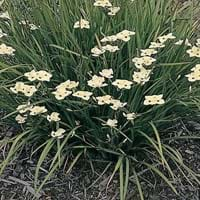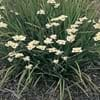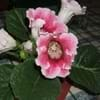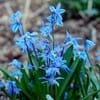Life Span
Perennial
Perennial
Type
Tender Perennial
Grass
Origin
Southern Africa
China
Types
Not Available
Greenstripe Vivax, Moso, Weavers Bamboo, Oldhamii
Number of Varieties
Not Available
Habitat
Desert, Mediterranean region, Subtropical climates, Temperate Regions
Subtropical climates, Wet Woods
USDA Hardiness Zone
8-10
8-11
AHS Heat Zone
10-8
12 - 8
Sunset Zone
H1, H2, 8, 9, 12, 13, 14, 15, 16, 17, 18, 19, 20, 21, 22, 23, 24
H1, H2, 8, 9, 14, 15, 16, 17, 18, 19, 20, 21, 22, 23, 24
Habit
Clump-Forming
Upright/Erect
Flower Color
Yellow, Light Yellow, Brown
Not Available
Flower Color Modifier
Bicolor
Bicolor
Fruit Color
Green, Brown
Not Available
Leaf Color in Spring
Green, Gray Green
Dark Green
Leaf Color in Summer
Green, Gray Green
Light Green
Leaf Color in Fall
Green, Gray Green
Dark Green
Leaf Color in Winter
Light Green
Dark Green
Leaf Shape
Grass like
Acicular
Plant Season
Spring, Summer, Fall, Winter
Spring, Summer, Fall, Winter
Sunlight
Full Sun, Partial Sun, Partial shade
Full Sun, Partial Sun
Type of Soil
Clay, Loam, Sand
Clay, Loam, Sand
The pH of Soil
Acidic, Neutral, Alkaline
Acidic, Neutral, Alkaline
Soil Drainage
Average
Average
Bloom Time
Indeterminate
Not Available
Tolerances
Drought
Drought
Where to Plant?
Container, Ground, Pot
Container, Ground
How to Plant?
Rhizome division, Seedlings
Grafting, Seedlings, Stem Planting, Transplanting
Plant Maintenance
Medium
Medium
Watering Requirements
Requires regular watering
Needs watering once a week, Use Mulches to help prevent water loss during hot and windy weather, Water Deeply
In Summer
Lots of watering
Lots of watering
In Spring
Moderate
Moderate
In Winter
Average Water
Average Water
Soil pH
Acidic, Neutral, Alkaline
Acidic, Neutral, Alkaline
Soil Type
Clay, Loam, Sand
Clay, Loam, Sand
Soil Drainage Capacity
Average
Average
Sun Exposure
Full Sun, Partial Sun, Partial shade
Full Sun, Partial Sun
Pruning
Remove dead leaves
Do not prune during shooting season, Prune in late summer or fall, Remove damaged leaves
Fertilizers
Any balanced general purpose fertilizer
All-Purpose Liquid Fertilizer
Pests and Diseases
Nematodes, Scale
Black sooty mold, Mealybugs, Mosaic viruses, Powdery mildew, pythogens, Stem rot
Plant Tolerance
Drought
Drought
Flower Petal Number
Single
Single
Foliage Texture
Medium
Coarse
Foliage Sheen
Matte
Matte
Attracts
Bees, Birds, Butterflies
Deers, Rabbits, Rats, Squirrels
Allergy
Skin irritation
allergic conjunctivitis, Asthma, Inflammation, Throat itching
Aesthetic Uses
Showy Purposes
Showy Purposes
Beauty Benefits
Not Available
Not Available
Environmental Uses
Ethnobotanic
Agroforestry, Air purification, No fertilizer, pesticides, or herbicides needed
Medicinal Uses
No Medicinal Use
Clears heat, Cold, fidgeting, Treating fever, Urinary tract problems
Part of Plant Used
Root
Leaves, Stem
Other Uses
Roots were worn to protect and strengthen the wearer, Used as Ornamental plant
Application in Handicrafts, Showy Purposes, Used As Food, Used in Furniture, Used in paper industry
Used As Indoor Plant
No
No
Used As Outdoor Plant
Yes
Yes
Garden Design
Bog Garden, Container, Feature Plant, Mixed Border, Tropical, Water Gardens
Feature Plant, Screening / Wind Break, Tropical
Botanical Name
DIETES bicolor
BAMBUSA oldhamii
Common Name
African iris, Fortnight lily
Clumping Bamboo, Giant Timber Bamboo, Oldham's Bamboo
In Hindi
African Iris
Bānsa
In German
Afrikanische Iris
Bambus
In French
African Iris
Bambou
In Spanish
Iris africano
Bambú
In Greek
Αφρικανική Iris
μπαμπού
In Portuguese
Iris africano
bambu
In Polish
Afryki Iris
Bambus
In Latin
African Iris
Bamboo
Phylum
Magnoliophyta
Magnoliophyta
Class
Magnoliopsida
Liliopsida
Clade
Angiosperms, Monocots
Not Available
Subfamily
Iridoideae
Not Available
Number of Species
Not Available
Not Available
Season and Care of African Iris and Giant Timber Bamboo
Season and care of African Iris and Giant Timber Bamboo is important to know. While considering everything about African Iris and Giant Timber Bamboo Care, growing season is an essential factor. African Iris season is Spring, Summer, Fall and Winter and Giant Timber Bamboo season is Spring, Summer, Fall and Winter. The type of soil for African Iris is Clay, Loam, Sand and for Giant Timber Bamboo is Clay, Loam, Sand while the PH of soil for African Iris is Acidic, Neutral, Alkaline and for Giant Timber Bamboo is Acidic, Neutral, Alkaline.
African Iris and Giant Timber Bamboo Physical Information
African Iris and Giant Timber Bamboo physical information is very important for comparison. African Iris height is 61.30 cm and width 30.50 cm whereas Giant Timber Bamboo height is 1,000.00 cm and width 10.00 cm. The color specification of African Iris and Giant Timber Bamboo are as follows:
African Iris flower color: Yellow, Light Yellow and Brown
African Iris leaf color: Green and Gray Green
Giant Timber Bamboo flower color: Not Available
- Giant Timber Bamboo leaf color: Dark Green
Care of African Iris and Giant Timber Bamboo
Care of African Iris and Giant Timber Bamboo include pruning, fertilizers, watering etc. African Iris pruning is done Remove dead leaves and Giant Timber Bamboo pruning is done Do not prune during shooting season, Prune in late summer or fall and Remove damaged leaves. In summer African Iris needs Lots of watering and in winter, it needs Average Water. Whereas, in summer Giant Timber Bamboo needs Lots of watering and in winter, it needs Average Water.





